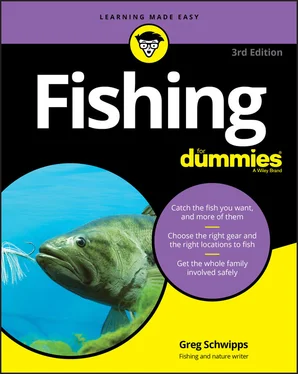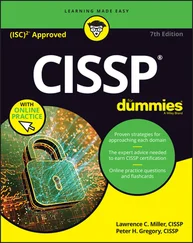Check the laws for the state in which you are fishing before you wet a line. Some states, especially those that offer both salt- and freshwater fishing, have varying rules about when and where you need a license. But in most places, if you’re fishing public property, you need a license. If you’re fishing private property, you may not need a license, but you need permission from the landowner. If you’re fishing in the state in which you reside, you qualify for a less-expensive, in-state license. If you’re visiting the state you’re fishing in, you must buy an out-of-state license, and these tend to be more expensive. For example, in Indiana, a resident annual fishing license is $17. An out-of-state annual license is $35. Seniors often get a discount, and often children under age 16 don’t need a license. Check your state’s laws.
Where to buy fishing licenses
Most bait shops can still sell licenses, along with big-box stores like Walmart. It has become increasingly common to buy your fishing license online, though. Find the website of your local Department of Natural Resources, and you will most likely find a page where licenses can be purchased. Often you pay for your license with a credit card, then simply print a copy of your license to carry with you at all times. You can print more than one copy, in case one gets wet or lost. Try to buy your license before your fishing trip commences, so that’s one less thing you have to worry about the morning of your trip.
 When buying your license online, make sure you are entering your credit card information into your respective official state website. Phony websites exist to take advantage of people who type “buying a fishing license” into a search engine. The authentic websites for purchasing fishing licenses for each state are often connected to the state government’s website or the state’s Division of Fish and Wildlife.
When buying your license online, make sure you are entering your credit card information into your respective official state website. Phony websites exist to take advantage of people who type “buying a fishing license” into a search engine. The authentic websites for purchasing fishing licenses for each state are often connected to the state government’s website or the state’s Division of Fish and Wildlife.
Chapter 3
Finding Good Fishing Water
IN THIS CHAPTER
 Finding fishable water you can access
Finding fishable water you can access
 Figuring out the water — and its fish
Figuring out the water — and its fish
 Seeing the difference between streams and rivers, ponds and lakes
Seeing the difference between streams and rivers, ponds and lakes
 Making saltwater less intimidating
Making saltwater less intimidating
 Knowing when to fish
Knowing when to fish
 Planning for the weather while fishing
Planning for the weather while fishing
Simply put, every decision I make about how and what I’m fishing for follows the first, crucial decision: where I’m fishing. You don’t fish streams the same way you fish ponds. Big rivers aren’t lakes. Public piers jutting out from the beach aren’t exactly like an untouched tidal inlet. So begin your fishing adventures by studying the body of water you intend to fish. When you know the water, you’ll begin to know the fish in it. And then the fun — the catching — begins!
Wherever you fish, follow the same advice I give college writing students: Pay attention to the world around you. With fishing, this means you must watch the water. Every swirl and splash tells you something. The fish’s world is largely hidden from you, but if you pay attention, you’ll find that every body of water provides hints about what’s happening below the surface. Watch the prey (frogs, minnows, and the like) and fellow predators like birds, and they’ll begin to tell you where the gamefish are.
All fish, in any body of water, relate to two key things: structure and cover. Structure refers to what lies beneath the surface of the body of water; a sharp drop-off or a point (a finger of land jutting into the water) is structure, for example. Think of structure as permanent features. Cover could be things like a weed bed or a sunken log. Manmade cover, like docks or piers, hold fish just as natural cover does. Be aware of structure and cover and you’ll find — and catch — more fish.
This chapter helps you figure out where to fish and then how and when to fish that location. There are a lot of variables at play when it comes to finding and evaluating fishing waters, but I do my best in this chapter to call out some typical conditions for both freshwater and saltwater locations.
As Chapters 4and 5make clear, there are hundreds of species of fish awaiting you. While they prefer a variety of habitats, some of those fish may live close to you. Although no two waters are exactly alike (and that’s part of the fun of this whole adventure!), streams in the Midwest share some things in common with streams in the east or anywhere. Farm ponds are alike wherever you go. What you learn in one spot will add to your understanding of how to fish the next.
Fishable water is where you find it. Train yourself to look for water with the following two characteristics:
Access: Fishable water is either open to the public or privately owned. Public water is governed by rules, and your first step is to investigate and learn those rules. Is fishing allowed only during certain hours? Are there rules in addition to state laws that regulate the fishing? If the body of water is open to the public, these rules should be posted or otherwise available (often on a state’s Fish and Wildlife or Department of Natural Resources website). (See the section on fishing licenses in Chapter 2.)If the water is privately owned, then you must ask that owner’s permission. Never fish first, intending to ask later! It’s not only rude, but illegal. However, many landowners will grant you permission if you ask politely. Common-sense rules apply: Ask in a courteous manner; take rejection if it comes; be honest about your intentions (whether you intend to keep or release, for example); and don’t bring all your friends. In other words, it’s a lot like asking a father for permission to date his daughter. If you’re fishing in a farm pond, remember to shut all gates behind you — you don’t want to let any animals out!
Fish: Sometimes giant bodies of water hold only stunted populations of scrawny fish. Occasionally the little pond on the golf course yields a ten-pound largemouth. The only real way to know is to study the water. Private landowners often know what fish have been stocked in that body of water. Some public places will post notices about the fish available too.When it comes to finding good water close to home, there are two good sources to check out online before you leave the house. The first should be your state’s Department of Natural Resources (DNR) website. Another good source is the takemefishing.org website, which is a national, non-profit creation of the Recreational Boating and Fishing Foundation. Both will most likely list popular fishing areas as well as the fish you can expect to find there. Ideally, you should seek water that carries a healthy supply of your favorite kind of fish in an aesthetically pleasing environment. How do you find such a paradise? This chapter helps you locate it.
Читать дальше

 When buying your license online, make sure you are entering your credit card information into your respective official state website. Phony websites exist to take advantage of people who type “buying a fishing license” into a search engine. The authentic websites for purchasing fishing licenses for each state are often connected to the state government’s website or the state’s Division of Fish and Wildlife.
When buying your license online, make sure you are entering your credit card information into your respective official state website. Phony websites exist to take advantage of people who type “buying a fishing license” into a search engine. The authentic websites for purchasing fishing licenses for each state are often connected to the state government’s website or the state’s Division of Fish and Wildlife. Finding fishable water you can access
Finding fishable water you can access










